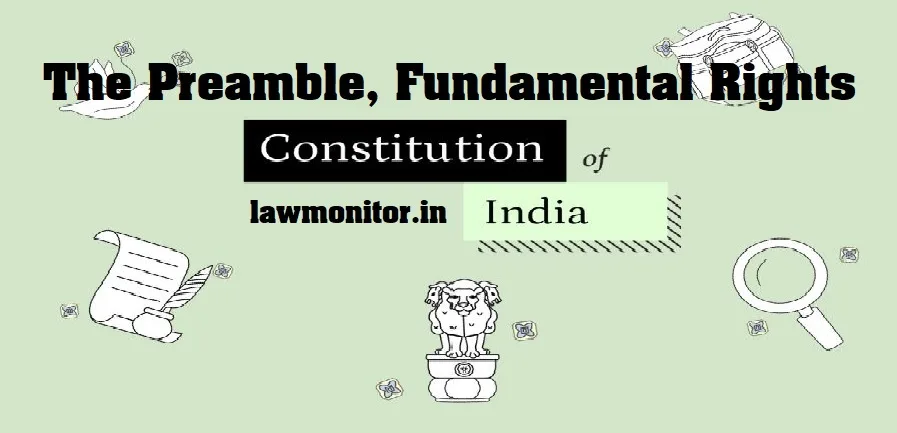Like in many other countries (e.g., US, South Africa, and so on), in India too human rights are rooted in the Constitution. The Indian constitutional human rights framework involve the following parts :
Contents
- The Preamble,
- Part III of the Constitution containing the Fundamental
Rights provisions, - Part IV offering the Directive Principles and
- Part IV(A) consists of the Fundamental Duties.
1. The Preamble:
- The Preamble is the introductory statement of the Constitution of India, serving to affirm its aims, objectives, and guiding principles.
- It plays a crucial role in the interpretation of provisions within the Constitution, particularly when those provisions are vague or ambiguous.
- The Preamble is considered the ‘basic structure’ of the Constitution. This concept implies that certain core features of the Constitution, like democracy, rule of law, secularism, separation of powers, and judicial review, cannot be amended by the Parliament.
- Many of these fundamental features are explicitly mentioned in the Preamble.
- The Preamble begins with the words “WE, THE PEOPLE OF INDIA,” emphasizing that the Constitution is a creation of the people.
- It solemnly resolves to constitute India into a “SOVEREIGN SOCIALIST SECULAR DEMOCRATIC REPUBLIC.”
- The Preamble outlines the objectives of the Constitution, which include:
- Justice, encompassing social, economic, and political justice.
- Liberty, which includes the freedom of thought, expression, belief, faith, and worship.
- Equality in status and opportunity.
- Promotion of fraternity, ensuring the dignity of the individual and the unity and integrity of the nation.
- It specifies that the Constitution was adopted, enacted, and given to the people by the Constituent Assembly on the 26th day of November, 1949.
- The Preamble is a declaration of the rights and freedoms that the Constitution aims to secure for all citizens. These rights and freedoms are elaborated upon in various parts and clauses of the Constitution.
2. Fundamental Rights :
- Found in Part III of the Constitution.
- Enforceable by higher courts in India.
- Article 32 allows aggrieved individuals to petition the Supreme Court for the enforcement of fundamental rights.
- Article 13 elevates the authority of fundamental rights, ensuring that no laws, ordinances, orders, etc., contradict or breach these rights.
1. Enforceability:
- Fundamental rights are mostly enforceable against the State.
- In some cases, they apply to private individuals as well.
- Example: Right to freedom of speech and expression (State) and prohibition of employing children below 14 years in hazardous activities (private individuals).
2. Definition of ‘State’:
- The term ‘State’ includes various entities:
- Government.
- Parliament.
- State Legislatures.
- District Boards.
- Panchayats.
- Municipalities.
- Other authorities or organizations acting as instruments or agencies of the state, e.g., Indian Oil Limited, Karnataka State Road Transportation Authority, Delhi Jal Board, etc.
3. Types of Fundamental Rights:
- Fundamental rights primarily consist of:
- Right to equality (Articles 14-18).
- Right to freedom (Articles 19-22).
- Right against exploitation (Articles 24 and 25).
- Right to freedom of religion (Articles 25-28).
- Cultural and Educational rights (Articles 29-30).
- Right to constitutional remedies (Articles 32-35).
Read Full Topic on Fundamental Rights:– Judiciary CLAT Notes: What are the Fundamental Rights of Indian Citizens?



